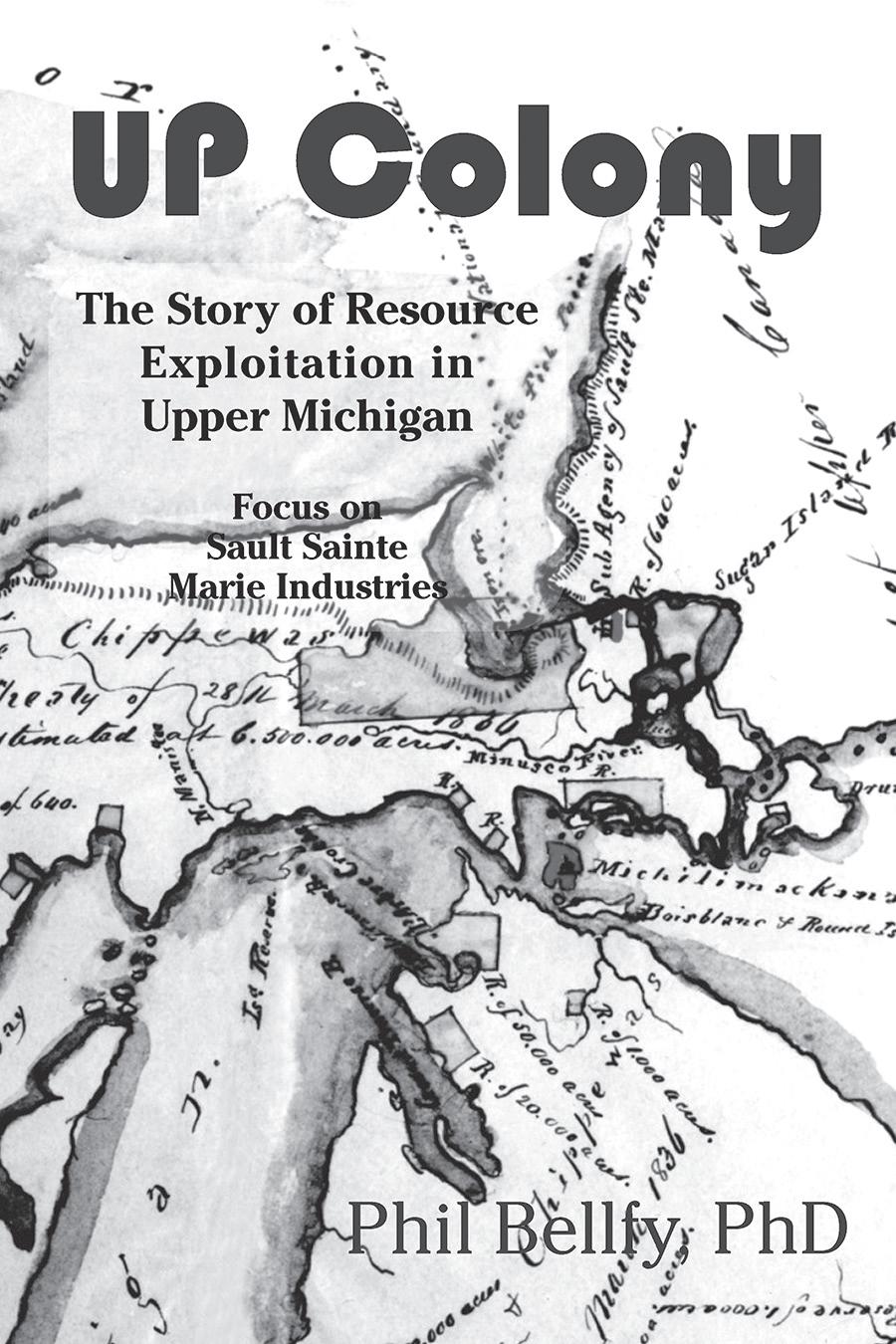
4 minute read
Superior Reads Victor Volkman
New book follows the trail of money out of the U.P.
Review by Victor Volkman
Advertisement
By Phil Bellfy
Published by Ziibi Press
Have you ever wondered how Michigan’s Upper Peninsula was full of natural resources and yet many of it’s people live in poverty even deeper than that found in Appalachia? Growing up, I assumed that the loggers and miners who lived in the U.P. harvested as much as they could, spent the money wildly, and had nothing left for themselves. The real answer is far more nuanced than that and a comprehensive macroeconomic analysis will show the real culprits, as Phil Bellfy points out in “U.P. Colony: The Story of Resource Exploitation in Upper Michigan -- Focus on Sault Sainte Marie Industries”. This is the first new book from Sault Ste. Marie’s Ziibi Press in almost a decade and it was definitely worth the wait.
Phil Bellfy deftly cuts through centuries of whitewashing to get to the real reasons why after $6 billion of extraction of lumber, copper, and iron ore, the people of this region are sunk in poverty and despair. U.P. Colony points out out the true impact of capitalism in the era of “Robber Barons.” Was the U.P. colonized by external forces, and how would we ever be able to measure that? Bellfy takes the clever tack of comparing the “two Soos” on either side of the St. Marys River. In comparing the American and Canadian Sault Sainte Marie, you can get a realistic apples-to-apples comparison of economic development and ruin.
First, let’s take a look at the radical notion that the U.P. was an “internal colony” of the United States. What does this mean in real terms that we could measure concretely? It turns out that Mexican sociologist Pablo Gonzales-Casanova (1922 - ) developed a six-point theory of internal colonization that can serve as a yardstick. To qualify as an internal colony, Gonazales-Casanova suggests the following qualities can be evaluated:
1. The economy of the internal colony is structured to complement that of the colonial center 2. The “development” is tied to one predominant sector 3. The monopoly structure is controlled by one colonial center 4. There exists an obvious disparity in the standards of living between colony and center; 5. There exists a repressive conflict-resolution structure 6. There is a tendency for existing inequalities to increase over time.
Although I won’t attempt to address the many interesting nuances of Bellfy’s thesis in this space, it is worth pointing out some easy matches with the internal colony theory. In terms of the first point, analysis of imports and exports to the U.P. shows an overwhelming trade deficit.
Almost none of the lumber, iron, and copper extracted from the U.P. has ever stayed there. Although you probably know there aren’t any iron ore smelting plants north of Detroit, you may be surprised to learn that the U.P. keeps almost none of the timber harvested for its own internal use. Belfy writes:
In fact, during the height of the lumbering boom from 1880 to 1890 Michigan shipped four and one-half times as much lumber as it consumed. Yet by 1912, Michigan was a net importer of lumber (Sparhawk and Brush, 1929).
Perhaps the biggest revelation to me was Bellfy’s discovery of the “one colonial center” that masterminded the exploitation of the U.P.’s abundant resources of timber, iron ore, and copper. Belfy writes:
“The 1840’s ‘copper rush’ to the U.P. was the first major mining boom of the United States. By 1846 about one thousand mining permits had been issued by the government for exploration and mining on government land. But without land ownership, the miners were reluctant to make capital investments and to do much actual mining, many preferring instead to speculate on the permit sale market. Consequently, little ore was mined and the U.S. government collected very little in royalties. In May, 1846, therefore, the government stopped selling permits, and later that year began selling the land outright. Capitalists from the East, notably Boston, soon became the leading investors in the U.P. copper country (Gates, 1951).”
This is evidenced most directly in the Calumet & Hecla Company, which as many yoopers know, was the predominant force in the Copper Country mining operations. But you probably didn’t know that that by 1884, Calumet and Hecla had become the sole selling agent for all Michigan copper, and together with three other mines (all Boston companies also), produced 71 percent of the copper mined in Michigan. Boston capitalists used the U.P.’s copper resources as their private ATM, siphoning money as fast they could while doing almost nothing to build the infrastructure of the U.P. itself. I’m sure the low wages paid to immigrants were an important factor in this equation as well. Anyway, all of the money earned was either paid out in dividends to investors or to develop new mines in places as far away as Africa and South America. Locally owned and operated mines in the U.P. never amounted to more than 2 percent of the mining production.
There’s much more to be learned by studying Phil Bellfy’s “U.P. Colony” to learn about the post-war history of the Soo and the many attempts to start or restart industrial operations in the past 60-plus years. Get a copy of “U.P. Colony” from your local library or bookseller and decide for yourself how the U.P. came to be in the social and economic state of being we’re facing in 2021.
About the author: Victor R. Volkman is a graduate of Michigan Technological University (class of ’86) and is the current president of the U.P. Publishers and Authors Association (UPPAA). He is senior editor at Modern History Press, publisher of the U.P. Reader.










